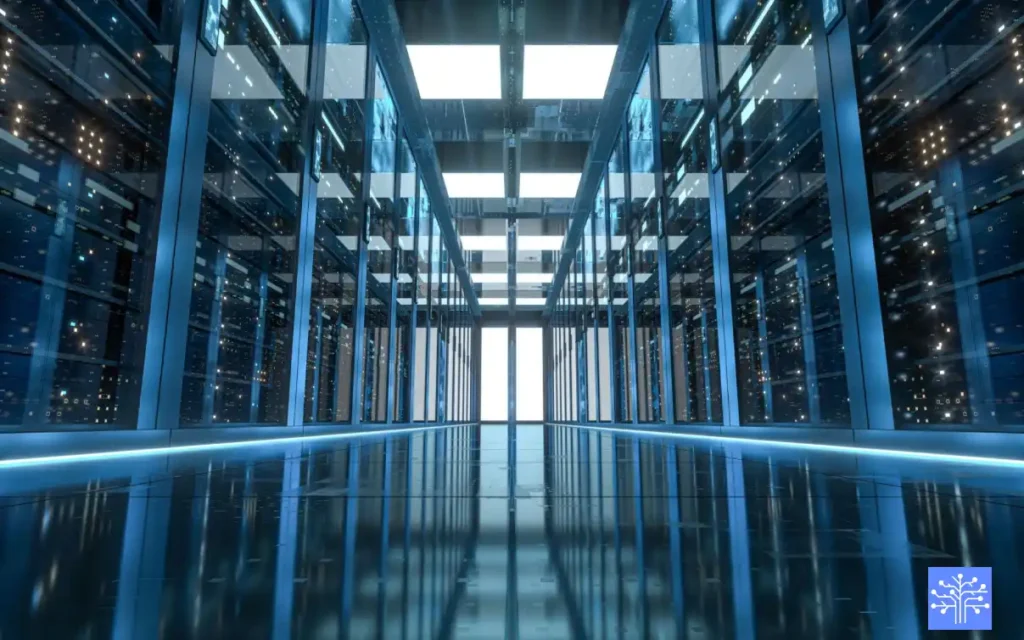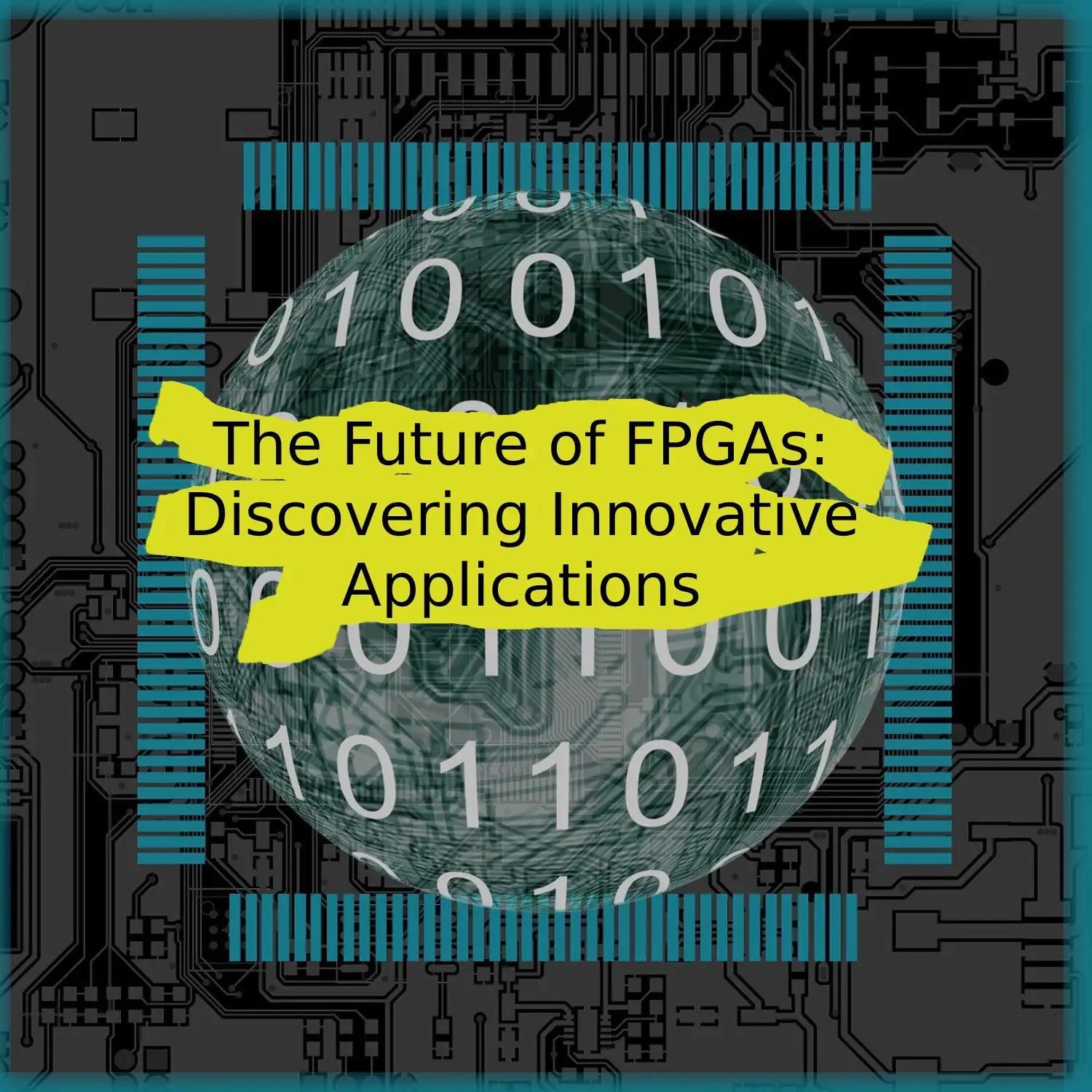FPGAs, or Field Programmable Gate Arrays, are rapidly gaining significance in today’s technology-driven world due to their unique capabilities and vast innovation potential.
These reconfigurable semiconductor devices offer exciting possibilities and are increasingly being used across a wide range of applications. In this article, we will explore how FPGAs are redefining data centers, revolutionizing autonomous systems, advancing next-generation networks, and facilitating scientific research. Let’s dive into the fascinating world of FPGAs and uncover their transformative impact.

In this article, we discuss the following things
- FPGAs Redefining Data Centers (click)
- FPGAs in Autonomous Systems (click)
- FPGAs and Next-Generation Networks (click)
- FPGAs in Scientific Research (click)
- Summary (click)
1. FPGAs Redefining Data Centers

1.1 Enhancing Performance and Efficiency
FPGAs are ushering in a new era for data centers by significantly improving performance and energy efficiency. These programmable hardware devices can be tailored to meet specific computational requirements, resulting in optimized processing capabilities. For instance, FPGAs are used in accelerating machine learning workloads, allowing data centers to swiftly process vast amounts of data and deliver near-real-time insights. Additionally, FPGAs enhance data processing in areas like database management, data compression, and encryption by offloading compute-intensive tasks with their parallel processing capabilities.
1.2 Enabling Customizable Hardware
One of the key advantages of FPGAs in data centers is their ability to provide customizable hardware solutions. Traditional data centers often face challenges when it comes to adapting to evolving computational needs. However, FPGAs offer flexibility in hardware design, enabling data centers to customize and reconfigure their systems as per changing requirements. This adaptability allows data centers to efficiently handle diverse workloads, ranging from high-performance computing to low-latency applications, with the same infrastructure.
1.3 Overcoming Challenges and Limitations
While FPGAs bring about significant improvements, there are challenges and criticisms associated with their implementation in data centers. Some concerns include the learning curve associated with programming FPGAs and the cost-effectiveness of their utilization. However, ongoing research and development efforts are continuously addressing these limitations. For instance, high-level synthesis tools are being developed to simplify FPGA programming, making it more accessible to a wider range of developers. Moreover, advancements in FPGA architectures and increased industry adoption are driving economies of scale, ultimately lowering the costs associated with FPGA deployment.
2. FPGAs in Autonomous Systems

2.1 Revolutionizing the Automotive Industry
FPGAs are playing a pivotal role in enabling the development of autonomous driving and ensuring vehicle safety. Their real-time data processing capabilities, low latency, and redundancy make them well-suited for the demanding requirements of autonomous vehicles. FPGAs can efficiently process massive amounts of sensor data, enabling rapid decision-making and enhancing overall vehicle safety. Additionally, they facilitate communication between various vehicle subsystems, including perception, control, and communication modules, ensuring seamless integration and functionality.
2.2 Enhancing Robotics and Industrial Automation
In the realm of robotics and industrial automation, FPGAs are contributing to significant advancements. With their ability to handle complex algorithms and real-time control, FPGAs are being utilized in machine vision systems, enabling robots to perceive and understand their surroundings accurately. Moreover, FPGAs play a crucial role in motion control, allowing precise and reliable movement of robotic arms or machinery. The adoption of FPGAs in industrial automation enhances efficiency, productivity, and safety.
2.3 Addressing Security and Safety Concerns
While the integration of FPGAs in autonomous systems brings about numerous benefits, there are valid concerns surrounding security and safety. As FPGAs are programmable, there is a possibility of tampering or malicious attacks on the hardware. To mitigate these risks, robust security measures and safety protocols are being implemented. FPGAs are equipped with built-in security features, such as encryption and tamper detection, to safeguard systems. Furthermore, collaborative efforts between industry stakeholders and regulatory bodies are continuously working towards establishing standardized security practices and ensuring reliable solutions.
3. FPGAs and Next-Generation Networks

3.1 Enabling Advanced Communication Systems
FPGAs play a crucial role in developing high-speed and reliable next-generation networks. With the advent of technologies like 5G, edge computing, and network virtualization, the demand for efficient communication systems has increased exponentially. FPGAs offer the flexibility and processing power required to handle the demanding network traffic and ensure seamless connectivity. These reconfigurable devices enable the rapid prototyping and implementation of advanced communication algorithms, ultimately contributing to enhanced network performance and reliability.
3.2 Accelerating Network Infrastructure
FPGAs provide significant benefits in accelerating network infrastructure by improving packet processing and traffic management. The ability to quickly reconfigure FPGA-based hardware allows for optimal packet routing and processing, reducing latency and enhancing overall network efficiency. Additionally, FPGAs enable network function virtualization, where traditionally dedicated network hardware functions are implemented in software, offering increased flexibility and scalability to network operators. The dynamic reconfiguration capabilities of FPGAs further optimize network resource allocation and enable efficient load balancing.
3.3 Addressing Scalability and Flexibility
The scalability and flexibility of FPGAs in network infrastructures pose unique challenges. As network demands increase, accommodating the growth requires seamless scalability. To address this challenge, ongoing research focuses on developing efficient tools and methodologies for managing large-scale FPGA deployments. Additionally, advancements in FPGA architectures, such as partial reconfiguration and hierarchical design techniques, enable improved scalability without sacrificing performance or power efficiency. By continually exploring innovative solutions, FPGAs can effectively address the scalability needs of next-generation networks.
4. FPGAs in Scientific Research

4.1 Advancing High-Performance Computing
FPGAs are pushing the boundaries of high-performance computing in scientific research applications. They offer remarkable computational power and parallelism, making them ideal for accelerating computationally intensive tasks. FPGAs find applications in areas such as molecular dynamics simulations, genomics, and quantum computing, where the ability to process vast amounts of data quickly is crucial. With their ability to handle complex algorithms efficiently, FPGAs are revolutionizing scientific research by enabling faster simulations, accelerating data analysis, and expanding the frontiers of computational sciences.
4.2 Customized Acceleration for Scientific Algorithms
Scientists can harness the power of FPGAs to create customized hardware accelerators for specific scientific algorithms. This level of customization leads to improved performance and energy efficiency compared to traditional computing architectures. By designing dedicated FPGA-based solutions, scientists can efficiently process and analyze data, ultimately enabling groundbreaking discoveries. FPGAs empower researchers to tailor their hardware to match the unique requirements of their algorithms, unlocking unprecedented computational capabilities that were previously unattainable.
4.3 Collaboration and Open-Source Efforts
Collaboration and open-source initiatives play a vital role in propelling FPGA usage in scientific research forward. The scientific community actively participates in sharing knowledge, resources, and codes related to FPGA design and implementation. Open-source projects, such as customizable FPGA libraries and frameworks, foster innovation and encourage the adoption of FPGA technology in scientific research. These collaborative efforts drive breakthroughs and advancements by providing researchers with powerful tools and a supportive ecosystem for experimentation and exploration.
Summary
In summary, FPGAs are poised to shape the future across various industries with their transformative potential. From redefining data centers and revolutionizing autonomous systems to advancing next-generation networks and facilitating scientific research, FPGAs offer unparalleled versatility. By enhancing performance and efficiency, enabling customizable hardware, and addressing scalability challenges, FPGAs open doors to innovative applications. Moreover, as the technology continues to evolve and researchers work together, the possibilities for leveraging FPGAs and their impact on society are boundless.
Frequently Asked Questions (FAQs)
- Q: What does FPGA stand for, and what exactly are they?
A: FPGA stands for Field Programmable Gate Array. FPGAs are reconfigurable semiconductor devices that offer customizable hardware solutions. They allow for the implementation of diverse digital circuits after manufacturing, making them highly versatile and adaptable to varying computational requirements. - Q: How are FPGAs used in data centers to enhance performance and efficiency?
A: FPGAs are revolutionizing data centers by improving performance and energy efficiency. They enable accelerated processing of machine learning workloads and enhance data processing capabilities, such as database management and data encryption. FPGAs also offer customizable hardware, ensuring flexibility to meet changing computational needs within data center environments. - Q: What are some examples of FPGA applications in autonomous systems?
A: FPGAs play a crucial role in revolutionizing the automotive industry by enabling autonomous driving and ensuring vehicle safety. Their real-time data processing capabilities and low latency make them well-suited for rapid decision-making in autonomous vehicles. Additionally, FPGAs contribute to advancements in robotics and industrial automation, facilitating tasks like machine vision, motion control, and robotic perception. - Q: How do FPGAs contribute to the advancement of next-generation networks?
A: FPGAs enable the development of high-speed and reliable next-generation networks. They provide the flexibility and processing power required to handle demanding network traffic, supporting technologies like 5G, edge computing, and network virtualization. FPGAs also accelerate network infrastructure by improving packet processing and traffic management, while offering scalability and flexibility through dynamic reconfiguration and network function virtualization. - Q: What are the benefits of using FPGAs in scientific research?
A: FPGAs are instrumental in advancing high-performance computing in scientific research applications. They offer computational power, parallelism, and customization capabilities, enabling faster simulations, efficient data analysis, and customized acceleration of scientific algorithms. FPGAs empower researchers to push the boundaries of scientific knowledge by providing unprecedented computational capabilities and improved performance compared to traditional computing architectures.


I have been browsing online more than three hours today yet I never found any interesting article like yours It is pretty worth enough for me In my view if all website owners and bloggers made good content as you did the internet will be a lot more useful than ever before
Hello my friend! I want to say that this article is amazing, nice written and come with approximately all vital infos. I抎 like to see extra posts like this .
Wonderful web site Lots of useful info here Im sending it to a few friends ans additionally sharing in delicious And obviously thanks to your effort